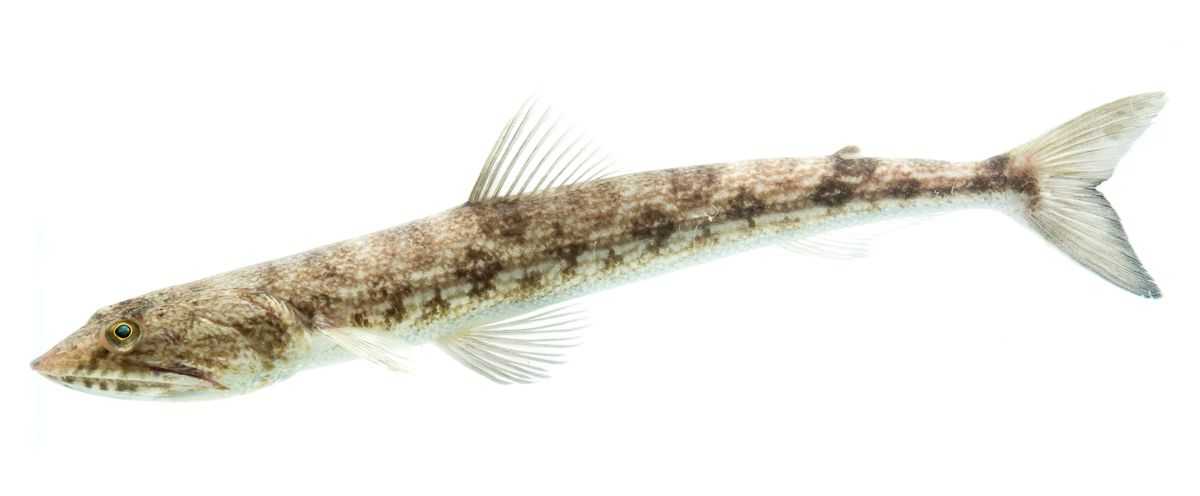Inshore Lizardfish

Species Details
Synodus Foetens
Synodontidae
Aulopiformes
inshore areas, western Atlantic, northern Gulf of Mexico
1 - 2 lbs.
15" - 19"
About Inshore Lizardfish (Synodus foetens)
An inshore lizardfish is a slender, elongated fish with a maximum length of around 19 inches long and an average size of 15 in. According to the International Game Fish Association, it holds a record of 2 lbs. and 8 oz. Most of the time, the heaviest inshore lizardfish you can catch is at most 1.98 lbs.
This fish has a cylindrical and long body with a pointed mouth and snout. Its top jaw is longer and extends beyond its eye. It has several sharp teeth and is sometimes called ��‘grinners’ because it appears to be more toothy compared to other fish its size. Its dorsal area’s color often ranges from shades of olive to brown, while its stomach is between the shades of yellow to white.
Diet and Size
The inshore lizardfish easily camouflages the ocean floor, making it a sneaky ambush predator. It feeds on smaller fishes and invertebrates such as crabs, shrimps, and cephalopods, making for an excellent bait to lure them. However, inshore lizardfish are not picky with baits. You can either use a live or artificial one.
An inshore lizardfish’s average size is about 15 inches long, while the largest size recorded is 19.67 in (50cm). It can weigh up to 2 lbs. Female inshore lizardfishes are usually bigger as they mature compared to their male counterpart.
Interesting Facts About Inshore Lizardfish
- Inshore Lizardfish has no anal and dorsal spines.
- Young ones have dark spots that eventually decrease as they grow older.
- They don’t guard their eggs, so they end up scattered in the water or fall into rocks, seaweeds, and anemones.
- Inshore lizardfish can also be used as bait to catch bigger fish like a halibut.
- In its food value, inshore lizardfish is not good since it is a very bony fish. It does not mean it is not edible. Its meat is mild and flaky once cooked. So, if you can deal with the bones, you might consider catching and cooking one.
Habitat and Distribution of Inshore Lizardfish
It is not difficult to find inshore lizardfish as they usually stay at the bottom of coastal marine waters – even shallow ones. This includes bays, creeks, lagoons, rivers, estuaries, and among seagrasses. It is often found over the sand or mud bottoms since they frequent these areas to hunt prey.
It is widely distributed predominantly in the northern part of the Gulf of Mexico, from south of New Jersey along the U.S. coast. Inshore lizardfish also frequents the Bahamas and the Caribbean.
Most anglers might know it stays in shallow inshore waters, but you might be surprised to catch out in deeper waters since some stay in a continental shelf up to 590 ft. in depth.
Inshore lizardfish are available year-round, but it is more abundant during the peak of spawning season in the months between March to June.
Inshore Lizardfish Fishing Techniques
One great thing about inshore lizardfish, especially for anglers, is that it is pretty much easy to catch. Most of the time, one can catch it when they’re fishing for something else. It also not picky when it comes to baits and lures – even artificial ones. Some anglers find this an annoying fact since they also tend to attack baits that are not intended for them.
The best fishing system to catch an inshore lizardfish is either through drifting or still fishing.







